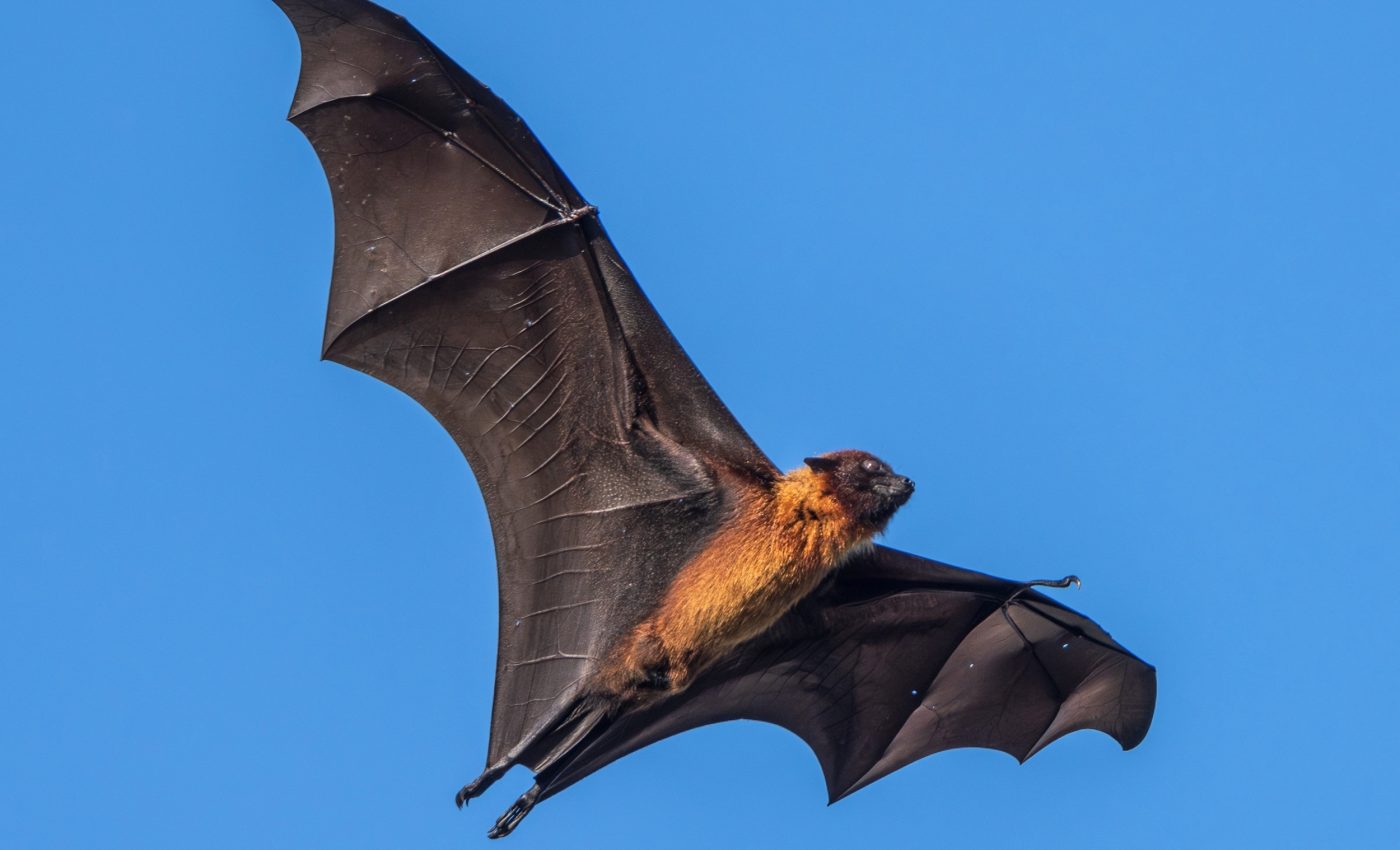
Bat brains map the world like living GPS systems
For the first time ever, scientists have tracked the brain activity of mammals navigating in the wild – not in a lab, but out in the open world.
A small group of fruit bats soared across the skies of Latham Island, doing what bats normally do. But this time, their brains were recorded in real time.
What they found was a kind of internal compass, tuned not just to where the bats were flying, but to something far more consistent and surprising.
The perfect bat testing ground
Latham Island sits about 25 miles off the Tanzanian coast. It’s small – only about the size of seven soccer fields – and there’s nothing much on it: no people, no buildings, no tall trees. That’s exactly why it was chosen for the research.
Scientists needed a natural environment that felt wild but was still manageable. The island had to be isolated so the bats wouldn’t just fly away, but also big enough for them to stretch their wings.
The region had to be open enough to avoid signal blockages, yet rich enough in features for real navigation. That’s a rare combination.
The expedition was led by a team from the Weizmann Institute of Science. They packed everything they needed – lab equipment, camping gear, satellite tech – and headed to Tanzania.
The researchers set up a temporary lab in a building they rented and renovated at the country’s Central Veterinary Institute. Then they outfitted six local fruit bats with the smallest GPS-tracking, brain-recording devices ever made.
Battling storms and setbacks
The trip didn’t go smoothly at first. Cyclone Freddy – one of the longest-lasting tropical cyclones ever recorded – was still stirring far to the south.
Strong winds made it impossible for the bats to fly for the first week. But when the skies finally calmed, the experiment took off.
Each night, the bats were released to fly solo for up to 50 minutes. As they flew, more than 400 neurons deep inside their brains lit up – specifically the ones bats use for navigation.
The compass inside a bat’s brain
Here’s where it gets interesting. Every time a bat pointed its head in a certain direction – say, north – a specific group of neurons would activate. This created what researchers call an “internal compass.”
The brain activity had been seen before in lab setting. But now, for the first time, it was seen in the wild. Even more surprising, the compass didn’t shift. It was global and consistent.
“One of the big questions in mammalian navigation is whether head-direction cells function as a local compass or as a global one,” said Professor Nachum Ulanovsky of the Weizmann Institute’s Brain Sciences Department.
“We found that the compass is global and uniform: No matter where the bat is on the island and no matter what it sees, specific cells always point in the same direction – north stays north and south stays south.”
Bats trust sight, not magnetism
Some animals use Earth’s magnetic field to navigate – especially birds. But the bats didn’t. If they had, their compass would’ve been accurate from the start. Instead, it took them a few nights to stabilize their internal compass.
“We observed a gradual learning process until, by the third night, the bats’ compass orientation became very stable,” said Ulanovsky. “Such learning doesn’t fit with using the magnetic field, which had been there since the very first night.”
So what were they using? Most likely, landmarks. The island had cliffs and boulders the bats could see, and fruit bats rely heavily on their vision. This kind of navigation takes time – because unlike a compass that’s always there, landmarks have to be learned.
“Every natural environment is full of landmarks that can be seen, smelled or heard,” Ulanovsky said.
“Latham Island’s topography included cliffs and large boulders that could serve as navigation cues. In fruit bats, sight is the dominant sense and has the longest range, so we assume they mainly rely on vision.”
Stars not a guiding light
You’d think bats might use the moon or stars to guide themselves, especially since they fly at night. But the study found that didn’t matter much.
“We found that the moon and stars are not essential for bats to navigate,” Ulanovsky said.
That said, celestial bodies might still help calibrate the compass early on – giving bats an extra tool to match what they see on the ground with what’s in the sky.
From bats to brains
Head-direction cells – this internal compass system – aren’t just found in bats. They’re in lots of mammals, including humans.
These cells show up very early in brain development, and scientists believe they play a big role in helping people find their way through the world.
“Until recently, a person unable to navigate would not have survived,” Ulanovsky said. “Even today, being able to orient oneself can be a lifesaver.”
“Studying mammalian navigation helps us hypothesize how navigation mechanisms work in the human brain and how they can become disrupted, for instance, in neurodegenerative diseases such as Alzheimer’s.”
Back at their home lab, the team had built large indoor spaces, including a 650-foot-long bat tunnel, to study navigation. But it turns out, nothing beats the wild.
“Our findings show there is no substitute for testing lab-based knowledge in the real world,” Ulanovsky said. “We hope our study will encourage other groups, in brain sciences and beyond, to take their research out of the lab and into nature.”
The full study was published in the journal Science.
—–
Like what you read? Subscribe to our newsletter for engaging articles, exclusive content, and the latest updates.
Check us out on EarthSnap, a free app brought to you by Eric Ralls and Earth.com.
—–













